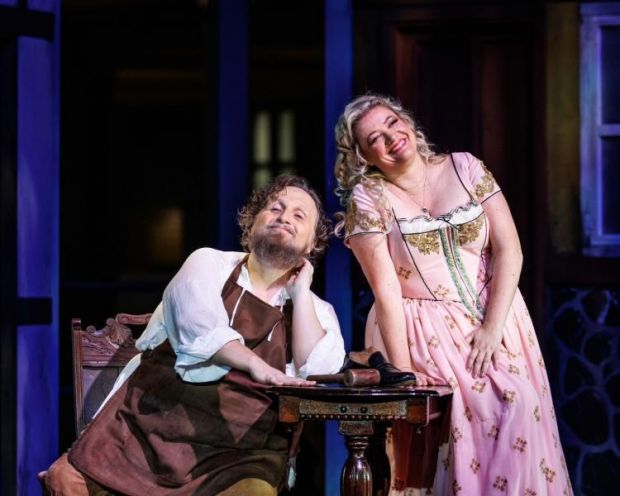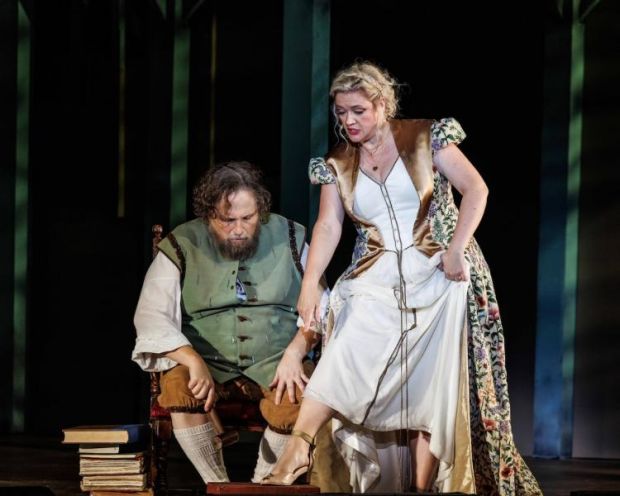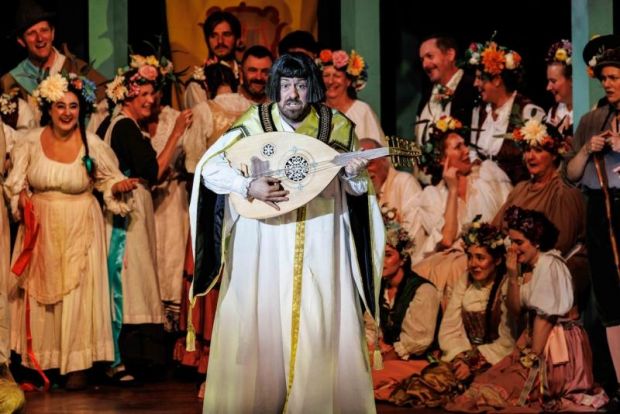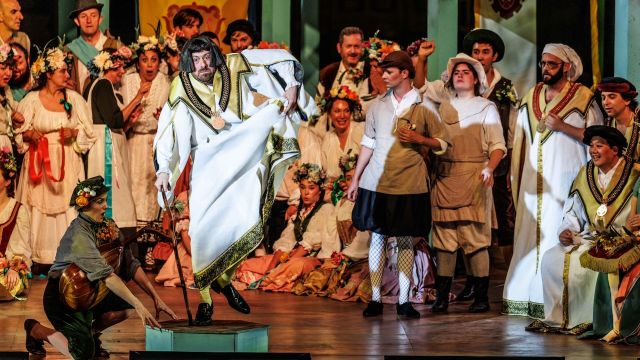Die Meistersinger von Nürnberg
Melbourne Opera is demonstrating, yet again, the ability to deliver excellent opera. This is a truly great event on a grand scale. Staging Die Meistersinger von Nürnberg at the Royal Exhibition Building is a bold and brave choice which pays off immensely in this colourful and energetic production. The location lends itself to constructing a simple set that blends well into the architecture, allowing the grandeur of the venue to create the incredible atmosphere of this unusual Wagner opera. Die Meistersinger von Nürnberg is a comedy and represents a distinct departure from the usual nature of Wagner’s body of work. The characters and the location are extremely terrestrial, and the themes especially address practical ideas around tradition versus innovation. The story is set in Nuremberg in the mid-16th century. It revolves around the individuals behind various trade guilds who participate in an association for the promotion of the Arts known as the mastersingers. Suzanne Chaundy makes a point of focusing on the human side of this story and distances the production from the nationalistic aspects of the text.

This approach allows the more light-hearted nature of the story to be brought to the forefront. The costume design (Karine Larché) is playfully evocative of the era and uses a large palette of rich colours to create a bright environment. The costuming is detailed and intricate and immediately evokes the psychological disposition of the different characters and their place in their community. This grounds the often-antiquated action and attitudes well within their historical context and becomes part of the humour of the way the story unfolds. The set design (Andrew Bailey) is kept relatively simple which also facilitates preserving the essential elements of the opera, maintaining the focus on the universal aspects of the story.

This is particularly distilled via the character of Hans Sachs (Warwich Fyfe), a well-respected cobbler and mastersinger who wisely takes both craft and creativity seriously. He actively embraces innovation without rejecting tradition and in the process, he selflessly facilitates the romance between Walther von Stolzing (James Egglestone) and Eva (Lee Abrahmsen). When Walther is initially rejected by the mastersinger guild (which jeopardises his union with Eva), Sachs actively advocates for a reconsideration of the rules that might stifle novel ideas which can enrich the Arts. The tenderness and sagacity with which this is executed results in the ridiculing of Walther’s odious rival Sixtus Beckmesser (Christopher Hillier). Hillier carries much of the comic load in this production and creates a caricature villain. This enables him to deliver some very amusing slapstick humour and renders the crooked nature of his character as quite innocuous. His appearance is equated with buffoonery and, therefore, the only real obstacle to the romance are the rigid regulations which govern the long and important tradition of the mastersingers.

The culmination of the performance where it stages the song contest festival is visually stunning. Here the absolute glory of the venue is fully exploited with a beautifully staged procession of the guilds arriving for the event. The imposing nature of the music is further reinforced by the stately nature of the staging and produces some breathtaking imagery. This opera offers over 4 hours of performance and is especially demanding for the role of Sachs. Fyfe is spectacular, and the entire cast provide crisp and extraordinary singing that echoes magnificently in the spacious hall. The Melbourne Opera Orchestra and Chorus are equally outstanding. The cohesiveness of the production is clearly driven by a distinct vision which is consolidated in all aspects of the production. This creates a truly exhilarating performance and allows the audience to participate in an incredibly unique history making production.
Patricia Di Risio
Photographer: Robin Halls
Subscribe to our E-Newsletter, buy our latest print edition or find a Performing Arts book at Book Nook.

